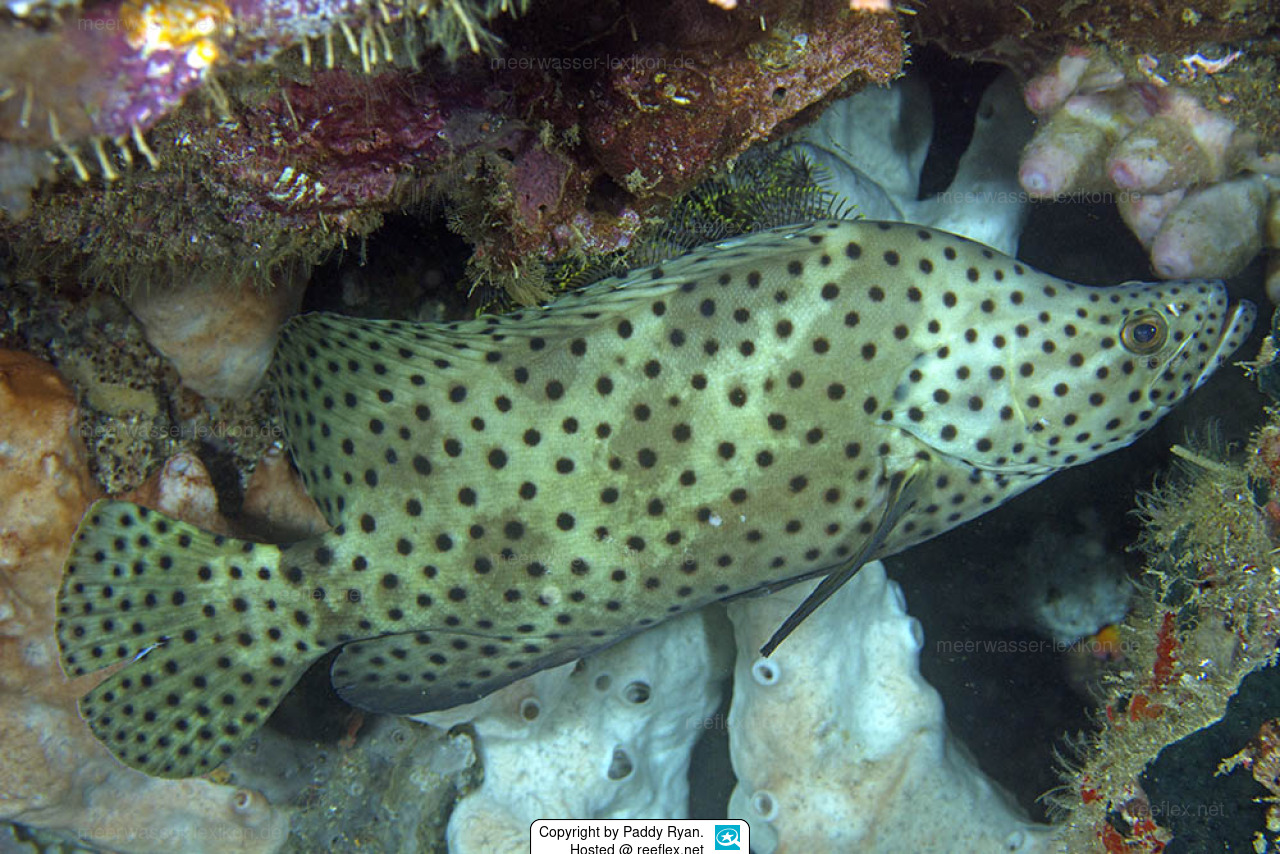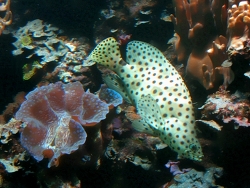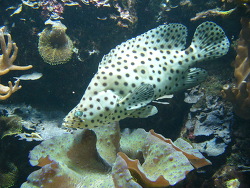Info
When you buy a cephalopholid take care to get a fish that is willing to accept food. These fish are weakened by the transport and thus acclimatize slowly.
The decoration should be structured in a way that the fishes are able to find a lot of caves/cover.
It may happen that a fish will accept a large coral (e.G. Sacrophyton) as shelter. The fish usually won't grow to its normal size in aquariums. They tend to remain 1 - 3" smaller. Until that point is reached they will grow rapidly.Due to its size it needs large tanks with more than 500 gallons.To all intends and purposes it may eat smaller fish.
Synonyms:
Chromileptes altivelis (Valenciennes, 1828)
Cromileptis altivales (Valenciennes, 1828)
Cromileptis altiveles (Valenciennes, 1828)
Cromileptis altivelis (Valenciennes, 1828)
Epinephelus altivelis (Valenciennes, 1828)
Serranus altivelis Valenciennes, 1828







 Dr. Paddy Ryan, USA
Dr. Paddy Ryan, USA














